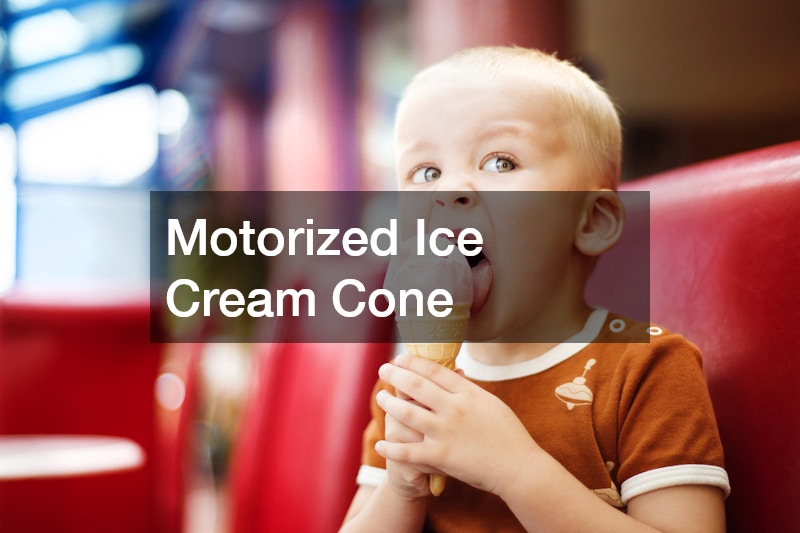In the world of innovation, inventors push boundaries to create new and exciting products. Some ideas are groundbreaking, while others can be more eccentric, bordering on strange. Patents, the legal means of protecting intellectual property, often give us a glimpse into the creativity—and sometimes the oddity—of these inventions. While some of these patented ideas never become mainstream, they show us the limitless imagination of those looking to solve problems or create something new.
From practical devices like kitchen gadgets to more bizarre inventions such as the Anti-Eating Mask, the patent world is full of surprises. Whether it’s creating a safer environment, improving everyday tasks, or simply offering convenience, these strange patents reflect the wide range of possibilities that inventors envision. Even companies in industries like roofing services or boat sales might be surprised to find themselves connected to some of the oddest ideas in the patent world.
In this article, we explore 10 strange patents that will leave you amazed, amused, or even slightly perplexed. Each patent reflects a different area of life, from survival kits for extreme situations to quirky gadgets designed for sheer convenience. Along the way, we’ll connect these strange inventions with real-world services and industries, offering a fun comparison between the mundane and the bizarre. Whether you’re in roofing, doggy day care service, or even kitchen renovations, there’s something in the world of patents for everyone.
1. Hyper-Light Speed Antenna

Roofing services might never encounter a need for hyper-light speed technology, but this patent aims to revolutionize the way we communicate. While the concept of breaking the speed of light is still theoretical, this patent imagines a world where antennas can transmit information faster than ever before. Although it may sound like science fiction, it showcases how inventors dream of pushing technological limits.
While roofing services may seem far removed from futuristic technology, patents like this remind us that innovations in one field can inspire advancements in others. Imagine how faster communication methods could streamline project management in industries like roofing. Faster data transmission could improve the way teams coordinate, allowing for quicker access to blueprints, weather reports, and real-time updates from job sites. Even though hyper-light speed technology is not directly applicable to roofing, advancements in communication can lead to greater efficiency and safety on the job.
Moreover, the exploration of such groundbreaking technologies emphasizes the importance of forward-thinking in all industries. Just as roofing professionals continuously look for better materials and installation methods, inventors in the tech world push the boundaries of what is possible. The idea behind the patent demonstrates that the pursuit of innovation can eventually lead to real-world applications that we may not yet fully understand. As technology evolves, industries like roofing may benefit from unexpected breakthroughs in fields like communication, robotics, or even material science.
In the broader context of industry development, keeping an eye on futuristic patents and inventions fosters a mindset of continuous improvement. For roofing companies, adopting new technologies—whether in communication or materials—helps them stay competitive in an ever-changing market. While hyper-light speed communication may still be a dream for now, the potential for other technological advancements to influence roofing practices is an exciting prospect worth considering.
2. Self-Operating Swing
For commercial design build firms focused on creating practical and aesthetic spaces, a self-operating swing may seem unnecessary. But for the inventor behind this patent, it’s about providing ultimate relaxation without the need for effort. This motorized swing offers a hands-free experience, perfect for those who want to sway back and forth without lifting a finger.
While a self-operating swing may not be a priority for commercial design build firms, it reflects the growing trend of incorporating convenience and automation into everyday spaces. In a world where smart homes and automated systems are becoming the norm, features like a motorized swing could appeal to niche markets, such as luxury resorts or high-end residential projects. For businesses that cater to clients looking for comfort and modern amenities, adding unique features like this can elevate the overall experience, blending functionality with relaxation.
Additionally, the concept of a self-operating swing touches on the broader theme of creating environments that prioritize user comfort and effortless interaction with their surroundings. For example, in outdoor spaces designed by commercial firms, automated features such as self-watering systems or motorized pergolas are becoming increasingly common. A motorized swing could serve as an innovative addition to a garden or patio, aligning with the push for automated solutions that enhance relaxation and reduce manual effort. By embracing these technologies, design-build firms can offer their clients modern spaces that cater to both form and function.
Furthermore, patents like this highlight the importance of creativity in design. While a motorized swing may seem unconventional, it shows that even the smallest elements in a project can be reimagined to provide a more enjoyable experience. In the competitive world of commercial design, offering something out of the ordinary—whether it’s a unique furniture piece or an unexpected feature—can make a space truly stand out, creating memorable experiences for users and clients alike.
3. Anti-Eating Mask
Inventors in the diet world have created all sorts of products to assist with weight loss, but the Anti-Eating Mask takes the cake. Connected to the HCG diet, which promotes extreme calorie restrictions, this mask physically prevents users from eating. It’s an extreme approach to dieting, showing just how far some inventors will go to solve common health issues.
While the Anti-Eating Mask may seem extreme, it reflects the ongoing quest in the diet industry to find effective weight loss solutions. Dieters are often willing to try unconventional methods in their pursuit of health and fitness goals, and this invention pushes the boundaries of what is considered normal. Though physically preventing someone from eating might seem drastic, it emphasizes the lengths to which people will go to combat overeating and achieve rapid results. However, it also raises ethical and practical concerns about the safety and effectiveness of such methods.
Beyond the ethical concerns, the invention also sheds light on the larger issue of the diet industry promoting unsustainable or unhealthy solutions. Products like the Anti-Eating Mask may address the symptom of overeating but fail to address the underlying causes of weight gain, such as emotional eating, poor nutrition education, or sedentary lifestyles. Instead of focusing on extreme measures, sustainable weight loss should prioritize balanced eating, exercise, and mental health. The existence of products like this highlights the need for more holistic approaches to health that promote long-term well-being rather than quick fixes.
Moreover, this invention serves as a cautionary tale about the lengths inventors and companies will go to create marketable solutions. It underscores the importance of scrutinizing diet products and methods before adopting them. While innovation in health and fitness is crucial, it’s important to differentiate between helpful tools and gimmicks that could do more harm than good. Consumers must be critical of extreme products, focusing instead on healthier, evidence-based approaches to weight management.
4. Crustless Bread Machine

Kitchen renovations often focus on functionality and efficiency, and what could be more convenient than a machine that removes the crust from your bread? This patent makes it easier for those who dislike crust to enjoy sandwiches without the fuss. It’s a small but practical invention for bread lovers who want their meals just right.
While a crust-removing machine might seem like a minor innovation, it addresses a surprisingly common preference among consumers. Many people, especially children, prefer their sandwiches without crusts, and manually removing them can be a tedious task. By automating this process, this invention adds a level of convenience to daily food preparation, particularly for busy households. It could also appeal to businesses like sandwich shops or bakeries, where efficiency is key, and time-saving devices can streamline operations.
This invention also highlights a growing trend in kitchen renovations that prioritize ease and convenience. As technology continues to evolve, homeowners are increasingly looking for smart appliances and gadgets that simplify routine tasks. From automated coffee makers to self-cleaning ovens, kitchens today are filled with devices designed to reduce manual labor. A crust-removing machine, though niche, fits neatly into this category, offering a small but effective solution for a common problem. For kitchen designers, incorporating such specialized tools can add an extra layer of personalization and practicality to their designs.
Beyond residential kitchens, this device could find applications in the food service industry as well. Catering companies, cafes, and school cafeterias often serve large quantities of sandwiches, and an automated crust remover could significantly reduce preparation time. Additionally, the ability to offer perfectly crust-free bread may appeal to customers with specific preferences or dietary needs, making this a potentially valuable tool for improving customer satisfaction. In the broader context of food innovation, even small gadgets like this one can make a big impact by catering to niche markets and enhancing user experience.
5. Portable Nuclear Shield
In industries like metal supply, safety is paramount, but few people anticipate needing a portable nuclear shield. This patent allows the user to carry a personal shield to protect against nuclear fallout. While it sounds like something from a dystopian future, it demonstrates how inventors think of every possible scenario to ensure human survival.
The invention of a portable nuclear shield, while seemingly futuristic, underscores the increasing focus on personal safety in extreme situations. In an era where concerns about global security, nuclear threats, and environmental hazards are on the rise, inventors are continually exploring ways to offer individuals more control over their safety. This type of innovation also reflects the broader trend of creating highly specialized protective gear for industries dealing with hazardous materials, such as a metal supplier or chemical production company. While it may not be something used in everyday situations, the concept shows a forward-thinking approach to preparing for the worst-case scenarios.
6. Dog Chastity Belt
At a doggy daycare service, staff work to ensure the safety and well-being of pets, but this strange patent takes things to another level. Designed to prevent unwanted pregnancies, the dog chastity belt is a protective device for canines. It’s certainly not something you see every day, but it shows the lengths inventors will go to solve unique problems.
7. A Wearable Hugging Simulator Device

Counseling services often focus on emotional well-being, and this hugging simulator device offers a unique solution for those craving human connection. Worn around the torso, this device simulates the sensation of being hugged, providing comfort to those who might feel isolated or lonely. It’s an odd, yet thoughtful invention that tackles the emotional side of care.
8. Jet-Powered Surfboard
Boat sales usually focus on traditional watercraft, but a jet-powered surfboard takes water sports to a whole new level. Equipped with a jet engine, this surfboard allows users to ride the waves with speed and precision, creating a thrilling experience. It’s a fun example of how inventors merge technology with recreation to create unforgettable experiences.
9. Buried Alive Survival Kit
Site excavation companies deal with digging and construction, but few prepare for the possibility of being buried alive. This patent offers a survival kit for those unfortunate enough to find themselves trapped underground. Equipped with air and other essentials, it’s a morbid yet practical invention for extreme survival situations.
10. Motorized Ice Cream Cone
terest in pe
Even your local restaurant might appreciate the convenience of this motorized ice cream cone. Instead of rotating your cone manually, this gadget does the work for you, ensuring an even lick every time. While it’s certainly a strange invention, it brings a little bit of fun to the everyday act of enjoying a dessert.
These strange patents show the breadth of human creativity, ranging from quirky gadgets to life-saving innovations. Whether you’re intrigued by a motorized ice cream cone or a portable nuclear shield, each patent reflects an inventor’s desire to solve problems, no matter how unusual. In many cases, these inventions serve as conversation starters, highlighting the odd yet imaginative possibilities of human thought.
While some of these ideas may never become mainstream, they demonstrate how far inventors will go to create solutions for every facet of life. From improving convenience in daily tasks to preparing for extreme emergencies, these patents are a testament to human ingenuity. Who knows? One of these odd inventions might even inspire the next breakthrough in your own industry, whether you’re in roofing services, counseling, or even boat sales.

